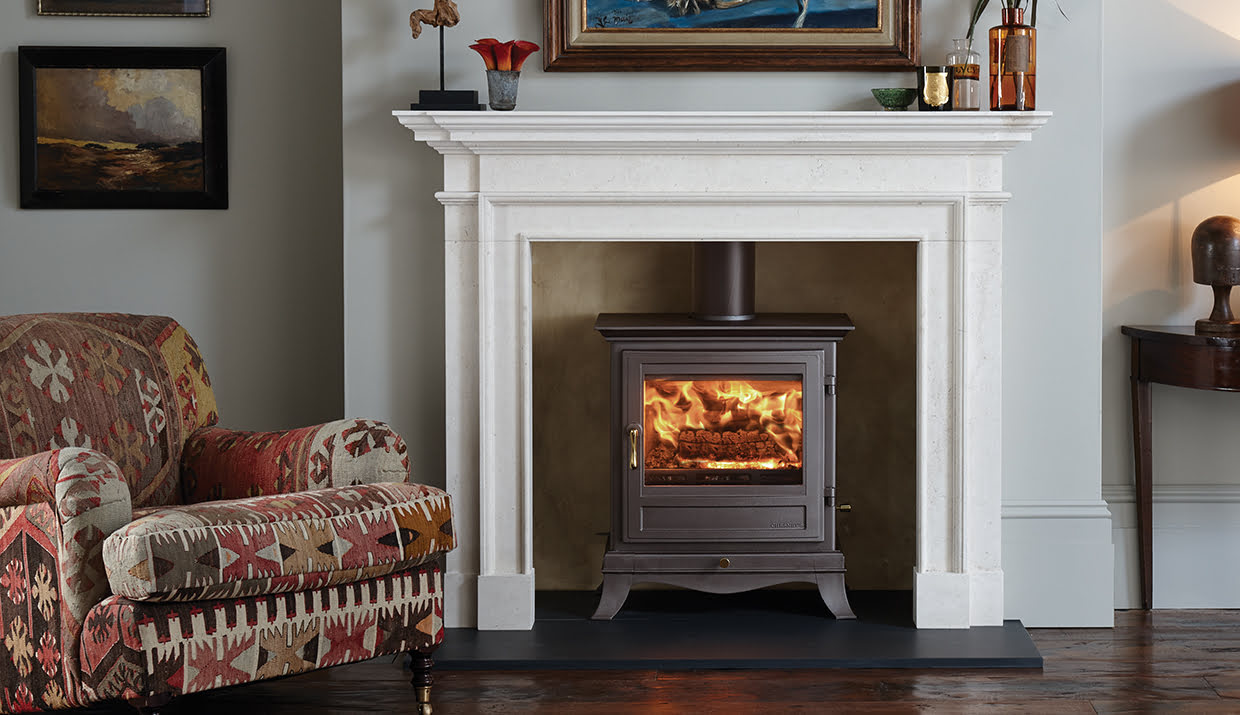

Articles
How To Get More Heat Out Of The Fireplace
Modified: October 28, 2024
Looking for articles on how to get more heat out of your fireplace? Discover tips and techniques to maximize the efficiency and warmth of your fireplace.
(Many of the links in this article redirect to a specific reviewed product. Your purchase of these products through affiliate links helps to generate commission for Storables.com, at no extra cost. Learn more)
Introduction
Welcome to the world of cozy warmth and crackling fires. A fireplace is not only a beautiful centerpiece in your home but also a source of heat during chilly winter nights. However, getting the maximum heat output from your fireplace can sometimes be a challenge. Fortunately, with a few adjustments and tricks, you can maximize the heat output and make your fireplace more efficient.
In this article, we will explore various strategies and techniques to help you get more heat out of your fireplace. From understanding the basics of fireplace heat to implementing proper maintenance practices, choosing the right firewood, and utilizing additional accessories, we will cover everything you need to know.
So, whether you want to create a cozy atmosphere in your living room or you want to save on your heating bills, read on to discover how you can maximize the heat output from your fireplace and make the most of this classic heating source.
Key Takeaways:
- Maximize fireplace heat output by choosing hardwood, proper maintenance, strategic log arrangement, and utilizing accessories like fans and heat reflectors.
- Select seasoned hardwood, seal drafts, and consider heat-resistant glass doors to enhance fireplace heat while creating a cozy and inviting atmosphere.
Read more: How To Get A Bird Out Of The Fireplace
Understanding the Basics of Fireplace Heat
Before we dive into the techniques for getting more heat out of your fireplace, let’s first understand how a fireplace produces and distributes heat. A traditional wood-burning fireplace operates on the principle of convection and radiation.
When you light a fire in your fireplace, the burning wood releases heat through combustion. This heat then radiates in all directions, warming the immediate surroundings. Additionally, heated air rises and creates a convection current, drawing in cool air from the room and sending it up the chimney.
However, it’s essential to note that a significant portion of the heat produced by a fireplace is lost up the chimney. This heat loss occurs due to inefficiencies in the combustion process and poor insulation. To maximize the heat output, it’s crucial to address the factors that contribute to heat loss.
One factor to consider is the Fireplace Efficiency Rating (FER). This rating provides an indication of how effectively a fireplace converts the energy in the wood into usable heat. Fireplaces with higher FERs have better heat output and efficiency.
In addition to FER, the design and construction of the fireplace play a significant role in heat distribution. Fireplaces with heat exchange systems or built-in blowers are designed to capture and redistribute more heat into the room. These features can significantly enhance heat output and make your fireplace more efficient.
Now that we have a basic understanding of how a fireplace works, let’s explore some strategies to maximize the heat output and ensure that the warmth radiates throughout your living space.
Maximizing Efficiency with Proper Fireplace Maintenance
A well-maintained fireplace is crucial for maximizing heat output and ensuring optimal efficiency. Regular maintenance not only keeps your fireplace functioning properly but also improves its heat-generating capabilities. Here are some maintenance tips to help you get the most out of your fireplace:
1. Clean the Chimney:
A clean chimney allows for better airflow and prevents the buildup of creosote, a flammable byproduct. Schedule an annual chimney cleaning by a professional chimney sweep to remove any debris or obstructions that could hinder proper airflow and heat transfer.
2. Inspect the Damper:
The damper controls the airflow into and out of the fireplace. Make sure it opens and closes properly and consider adding a damper seal to further prevent heat loss when the fireplace is not in use.
3. Check for any Leaks:
Inspect the fireplace for any cracks, gaps, or leaks that could allow the escape of warm air. Use fireplace caulk or sealant to fill any gaps, ensuring better heat retention and preventing cold drafts.
4. Clear Ash and Debris:
Regularly remove the ashes and debris from the fireplace to improve airflow. However, it’s important to leave a thin layer of ash on the fireplace floor. This layer acts as insulation, reflecting heat back into the room.
5. Install a Fireplace Insert:
Consider installing a fireplace insert, which is a highly efficient wood-burning stove that fits into your existing fireplace. Fireplace inserts are designed to maximize heat output and minimize heat loss, making them a great investment in energy efficiency.
6. Seal the Fireplace Opening:
When the fireplace is not in use, consider using a fireplace cover or airtight doors to seal off the opening. This prevents cold air from entering the room and warm air from escaping up the chimney.
By implementing proper fireplace maintenance practices, you can ensure that your fireplace operates at its highest efficiency, resulting in more heat output and a warmer and cozier living space.
Choosing the Right Firewood for More Heat
When it comes to maximizing the heat output of your fireplace, selecting the right firewood is essential. Different types of wood have varying levels of energy content and burn characteristics that directly impact the amount of heat generated. Here are key factors to consider when choosing firewood:
1. Hardwood vs. Softwood:
Hardwoods, such as oak, maple, and birch, are denser and contain more energy than softwoods like pine or fir. They burn slower and produce hotter and longer-lasting fires, resulting in greater heat output. Softwoods, on the other hand, ignite quickly and produce a vibrant flame, but they burn faster and generate less heat.
2. Seasoned Firewood:
Seasoned firewood refers to wood that has been dried for a minimum of six months to a year. Seasoning reduces the moisture content, making the wood burn more efficiently and producing more heat. Burning wet or green wood not only decreases heat output but also increases the production of smoke and creosote, leading to poor air quality and potential chimney hazards.
3. Wood Density:
Wood density affects both the burn time and the heat output. Dense woods like oak, hickory, and beech have a higher energy content and burn longer, producing sustained heat. Softer woods like pine and cedar burn faster but produce less heat. Aim for using primarily hardwoods for maximum heat output.
Read more: How To Heat A House With A Fireplace
4. Wood Size and Splitting:
Logs that are cut into smaller pieces and split into smaller sections have a larger surface area and ignite quicker. This allows for more efficient burning and increased heat output. Aim for logs that are around 3-6 inches in diameter and split into manageable sizes.
5. Storage and Drying:
Properly storing firewood is crucial for maintaining its dryness. Store your firewood in a well-ventilated area, preferably off the ground, to ensure proper airflow and prevent excess moisture absorption. This way, you’ll have a ready supply of properly dried and seasoned wood for optimal heat output.
By selecting the right firewood and ensuring it is properly seasoned and stored, you can significantly enhance the heat output of your fireplace. Remember, quality firewood is key to creating a warm and inviting atmosphere in your home during those cold winter nights.
Using Fire Starters and Kindling to Increase Heat Output
When building a fire in your fireplace, using fire starters and kindling is a great technique to increase the heat output. These materials help to ignite the fire quickly and efficiently, allowing for a faster buildup of heat. Here are some tips for using fire starters and kindling effectively:
1. Fire Starters:
Fire starters are small items designed to easily ignite and provide a steady flame to get your fire going. They come in various forms, such as firestarter logs, wax-based fire starters, or even homemade options like newspaper knots soaked in wax. Place one or two fire starters at the base of the wood pile to ensure a quick and consistent ignition.
2. Kindling:
Kindling refers to small, dry sticks or branches that are highly combustible. They act as fuel to help sustain the initial fire and allow for the gradual ignition of larger logs. Prepare a bundle of kindling by collecting twigs, dry branches, or small wood scraps, and arrange them in a teepee or crisscross pattern on top of the fire starters.
3. Airflow:
Creating proper airflow is essential for a robust fire. Place the kindling in a loose and airy formation to allow oxygen to flow freely. Adequate airflow helps the fire burn hotter and faster, leading to increased heat output.
4. Gradual Size Increase:
When adding larger logs to the fire, start with smaller pieces and gradually increase the size. This allows for a more efficient transfer of heat from the kindling to the larger logs. Add the larger logs once the fire has established a steady, hot flame.
5. Keep the Firebox Clear:
Make sure the firebox is clear of debris and ashes before starting a fire. This allows for proper airflow and ensures that the fire gets enough oxygen to burn effectively. Clear any ashes from previous fires and remove any obstacles that may hinder the heat circulation.
By utilizing fire starters and kindling, you can ignite your fire quickly and efficiently, resulting in a faster buildup of heat in your fireplace. Remember, proper airflow and gradually increasing the log size are key factors in achieving maximum heat output.
Read more: How To Get More Storage On A Samsung
Arranging Logs for Better Air Circulation and Heat Distribution
The way you arrange the logs in your fireplace can have a significant impact on air circulation and heat distribution. Properly arranging the logs allows for more efficient burning, increased heat output, and a longer-lasting fire. Here are some tips for arranging logs to optimize airflow and heat distribution:
1. Stack the Logs with Space in Between:
When arranging the logs, leave some space between them to promote better airflow. This space allows oxygen to circulate around the logs, helping them burn more efficiently and producing a hotter fire. Avoid tightly packing the logs together, as this restricts airflow and can lead to a smoldering fire with reduced heat output.
2. Use a Log Cabin or Teepee Style:
Two popular log arrangement styles are the log cabin and teepee methods. For a log cabin arrangement, stack two parallel rows of logs in a square or rectangular shape, leaving space in the center for tinder and kindling. This style provides good airflow and allows the fire to burn from the center outwards, maximizing heat distribution. The teepee style involves leaning logs against each other in a triangular shape, creating a chimney effect for improved airflow and heat circulation.
3. Start with Smaller Logs on the Bottom:
When building your log arrangement, start with smaller logs or split pieces at the bottom. These smaller logs ignite more easily, allowing for a faster start to the fire. As the fire grows, the smaller logs will burn and create a bed of hot embers, which will help ignite the larger logs placed above them.
Read more: How To Make Gas Fireplace More Efficient
4. Gradually Increase Log Size:
To ensure consistent heat distribution and prolonged burning, gradually increase the size of the logs as the fire progresses. Start with smaller logs as the base and gradually add larger logs on top. This method allows for a steady release of heat over an extended period while maintaining a well-balanced fire.
5. Place Split Side Down:
When arranging the logs, place the split side down. This allows the flames to reach the inner part of the log, ensuring more complete combustion and generating more heat. Placing the split side down also helps the fire burn more evenly and reduces the chance of logs rolling out of the fireplace.
Remember, proper log arrangement promotes better airflow, which leads to increased heat output and more efficient burning. Take the time to arrange your logs strategically, and you’ll be rewarded with a cozy and warm fire that fills your living space with radiant heat.
Installing Fireplace Fans and Grates for Enhanced Heat Circulation
One effective way to enhance heat circulation and maximize the heat output from your fireplace is by installing fireplace fans and grates. These accessories help improve airflow, distribute heat more evenly, and increase the overall efficiency of your fireplace. Here’s how you can benefit from installing fireplace fans and grates:
1. Fireplace Fans:
Fireplace fans, also known as fireplace blowers, are designed to improve the circulation of warm air throughout the room. They work by drawing in cool air from the room and forcing it back out as warm air after passing it through heat exchanger tubes. This helps to distribute the heat more efficiently and effectively in a larger area.
There are different types of fireplace fans, including inline fans that can be installed directly into the ventilation system of your fireplace, or standalone fans that can be placed in front of the fireplace opening. These fans are typically equipped with adjustable speed settings, allowing you to control the airflow and customize the level of heat circulation.
Read more: How To Make A Wood Fireplace More Efficient
2. Fireplace Grates:
A fireplace grate is a metal frame with bars that holds the firewood off the floor of the fireplace. It allows for better airflow underneath the logs, helping them burn more efficiently. Additionally, the elevated position of the logs on the grate allows more radiant heat to escape from the sides and bottom of the logs, increasing heat production.
When choosing a fireplace grate, opt for one with widely spaced bars to allow sufficient airflow and the escape of heat. You can also consider a grate with a built-in heat reflector, as it helps direct more heat back into the room instead of up the chimney.
3. Installation Considerations:
When installing fireplace fans and grates, it’s essential to follow the manufacturer’s instructions and safety guidelines. Ensure that the fans are securely mounted and wired, and that the grates are stable and fit properly in your fireplace.
Some fireplace fans may require professional installation, especially if they require electrical wiring or modifications to your fireplace’s ventilation system. If you’re unsure about the installation process, it’s best to consult with a qualified technician to ensure proper and safe installation.
By installing fireplace fans and grates, you can significantly enhance heat circulation and distribution, making your fireplace more efficient and increasing the overall warmth in your living space. These accessories are a worthwhile investment for those seeking to improve the effectiveness and heat output of their fireplace.
Sealing Drafts and Insulating the Fireplace for Improved Heat Retention
To maximize the heat output from your fireplace, it’s important to focus on sealing drafts and insulating the fireplace. By preventing cold air from entering and warm air from escaping, you can significantly improve heat retention and ensure that more heat is directed into your living space. Here’s how you can effectively seal drafts and insulate your fireplace:
1. Check for Drafts:
Start by inspecting your fireplace for any noticeable drafts. These drafts can occur around the fireplace opening, chimney, or even through cracks in the masonry. Close all doors and windows in the room and use your hand to feel for any cool air entering the room through these areas.
Read more: How To Circulate Heat From Fireplace
2. Install a Chimney Balloon or Damper Sealing:
A chimney balloon or damper sealing is an effective way to prevent drafts and heat loss when the fireplace is not in use. A chimney balloon is an inflatable device that is inserted into the chimney to block airflow, while a damper sealing attaches directly to the damper mechanism. Both options create an airtight seal, preventing drafts and minimizing heat loss.
3. Use Fireplace Caulk or Sealant:
To seal any gaps or cracks around the fireplace opening or between the hearth and the floor, use fireplace caulk or sealant. Apply the caulk or sealant to cover any visible gaps and ensure a tight seal. This helps to prevent drafts and stop the escape of warm air from your living space.
4. Insulate the Chimney or Flue Liner:
If your fireplace has a chimney or flue liner, insulating it can improve heat retention. Insulation helps to keep the flue warmer, allowing for better draft conditions and minimizing the loss of warm air. There are insulation materials specifically designed for chimney and flue liners that can be easily installed for maximum efficiency.
5. Seal Air Leaks with Fireplace Doors:
Installing fireplace doors is another effective way to seal off the fireplace opening when it’s not in use, preventing drafts and heat loss. Choose doors made of heat-resistant materials and ensure a proper fit to create a barrier between the living space and the chimney.
By sealing drafts and insulating your fireplace, you can reduce heat loss, retain more warmth, and increase the efficiency of your fireplace. Not only will this result in a cozier living space, but it can also help lower energy costs by reducing the need for additional heating sources.
Read more: How To Take Out A Fireplace
Using Fireplace Doors and Heat Reflectors to Boost Heat Output
When it comes to enhancing the heat output from your fireplace, fireplace doors and heat reflectors can be valuable additions. These accessories work together to increase heat circulation, improve efficiency, and ultimately boost the overall warmth in your living space. Let’s explore how using fireplace doors and heat reflectors can help maximize heat output:
1. Fireplace Doors:
Installing fireplace doors is an excellent way to increase heat retention and prevent heat loss when the fireplace is not in use. Fireplace doors act as a barrier, sealing off the opening and preventing drafts from entering the room. By blocking the cold air from coming in, more heat is directed into the living space, helping to maintain a cozy and comfortable environment.
When the fire is burning, you can keep the fireplace doors partially open, allowing for ventilation and proper airflow. However, always ensure to follow the manufacturer’s recommendations for the safe operation of the fireplace doors.
2. Heat Reflectors:
Heat reflectors, also known as fireback or fireplace reflectors, are made of a highly reflective material that sits at the back of the fireplace. They are designed to reflect heat radiation from the fire back into the room. By positioning a heat reflector behind the fire, more heat is redirected towards the living space, maximizing heat output and improving efficiency.
Heat reflectors also help to protect the masonry of the fireplace from the intense heat, reducing the risk of damage and prolonging the lifespan of the fireplace. They come in various materials, including cast iron, stainless steel, and reflective panels, offering a range of options to suit different fireplace designs and personal preferences.
3. Installation Considerations:
When installing fireplace doors and heat reflectors, it’s important to follow the manufacturer’s instructions and guidelines. Ensure that the doors are properly mounted and fit tightly to provide an effective seal. When positioning the heat reflector, make sure it is placed securely against the back wall of the fireplace, following the recommended installation instructions.
It’s worth noting that fireplace doors and heat reflectors are not suitable for all types of fireplaces. Gas fireplaces, for example, may not require fireplace doors or heat reflectors as they are designed for more efficient heat distribution. Always consult with a professional or the fireplace manufacturer to determine the compatibility and suitability of these accessories for your specific fireplace.
By using fireplace doors and heat reflectors, you can improve heat circulation, retain more warmth, and increase the overall heat output from your fireplace. These accessories are simple yet effective additions that can make a noticeable difference in the comfort and coziness of your living space.
Read more: How To Get More Construction Work
Supplementing Fireplace Heat with Heat-Resistant Glass Doors
One effective way to supplement the heat output from your fireplace is by installing heat-resistant glass doors. While fireplace doors are commonly used to prevent drafts and reduce heat loss when the fireplace is not in use, heat-resistant glass doors provide additional benefits by allowing you to enjoy the beauty of the fire while still enhancing heat circulation. Here’s how heat-resistant glass doors can supplement fireplace heat:
1. Heat Conduction:
The primary function of heat-resistant glass doors is to provide a barrier between the fire and the room, preventing drafts and reducing heat loss. However, heat-resistant glass is also excellent at conducting heat. When the fire is burning, the glass absorbs the heat and radiates it back into the room, enhancing heat circulation and ensuring that more heat is directed into your living space.
2. Heat Retention:
Heat-resistant glass doors help to retain the heat generated by the fire within the fireplace. As the fire burns, the glass doors trap the heat inside, preventing it from escaping up the chimney. This allows the heat to accumulate and circulate in the room, resulting in increased warmth and more efficient heat distribution.
3. Enhanced Safety:
Installing heat-resistant glass doors also improves safety by creating a protective barrier between the fire and the surrounding area. The glass doors help to contain sparks, ashes, and embers, minimizing the risk of accidental fire ignition or damage to furniture and flooring. It adds an extra layer of protection, making your fireplace a safer and more enjoyable feature in your home.
Read more: How To Put Out Fire In Fireplace
4. Aesthetic Appeal:
In addition to their functional benefits, heat-resistant glass doors also enhance the aesthetic appeal of your fireplace. The transparent glass allows you to enjoy the mesmerizing sight of the crackling fire, providing a focal point in the room and creating a cozy ambiance. The doors come in various designs and finishes to complement your interior décor and personal style.
5. Installation Considerations:
Installing heat-resistant glass doors requires careful consideration and professional assistance. The doors need to be properly measured, fitted, and secured to ensure a tight seal and optimal performance. It’s important to consult with a qualified technician or fireplace professional to ensure the correct installation and adherence to safety standards.
By supplementing your fireplace with heat-resistant glass doors, you can improve heat circulation, retain more warmth, enhance safety, and enjoy the visual appeal of the fire. These doors are a worthwhile investment for those seeking to maximize the heat output and overall comfort of their fireplace.
Conclusion
Getting more heat out of your fireplace requires a combination of proper techniques and accessories. By implementing the strategies discussed in this article, you can significantly enhance the heat output, maximize energy efficiency, and create a warm and inviting atmosphere in your home.
Understanding the basics of fireplace heat, such as convection and radiation, provides a foundation for optimizing heat output. By maximizing efficiency through regular fireplace maintenance, including cleaning the chimney, inspecting the damper, and clearing ash and debris, you can ensure that your fireplace operates at its highest efficiency.
Choosing the right firewood, focusing on hardwoods that are seasoned and stored properly, helps to generate more heat and burn longer. Incorporating fire starters and kindling into your fire-building process ignites the fire quickly, while arranging the logs strategically improves air circulation and heat distribution.
Installing fireplace fans and grates enhances heat circulation and dispersal, while sealing drafts and insulating the fireplace prevents heat loss and boosts heat retention. Additionally, using fireplace doors and heat reflectors helps to further increase heat output and improve efficiency.
Lastly, heat-resistant glass doors not only provide safety and stunning visual appeal but also supplement fireplace heat by conducting and retaining the warmth produced by the fire.
In conclusion, by implementing these strategies and utilizing the appropriate accessories, you can enjoy a more efficient and warmer fireplace experience. Remember to follow proper installation and safety guidelines, consult professionals when needed, and continue to maintain your fireplace regularly for optimal functionality and heat output.
So, get ready to cozy up in front of a roaring fire and enjoy the soothing warmth and inviting ambiance it brings to your home!
Frequently Asked Questions about How To Get More Heat Out Of The Fireplace
Was this page helpful?
At Storables.com, we guarantee accurate and reliable information. Our content, validated by Expert Board Contributors, is crafted following stringent Editorial Policies. We're committed to providing you with well-researched, expert-backed insights for all your informational needs.
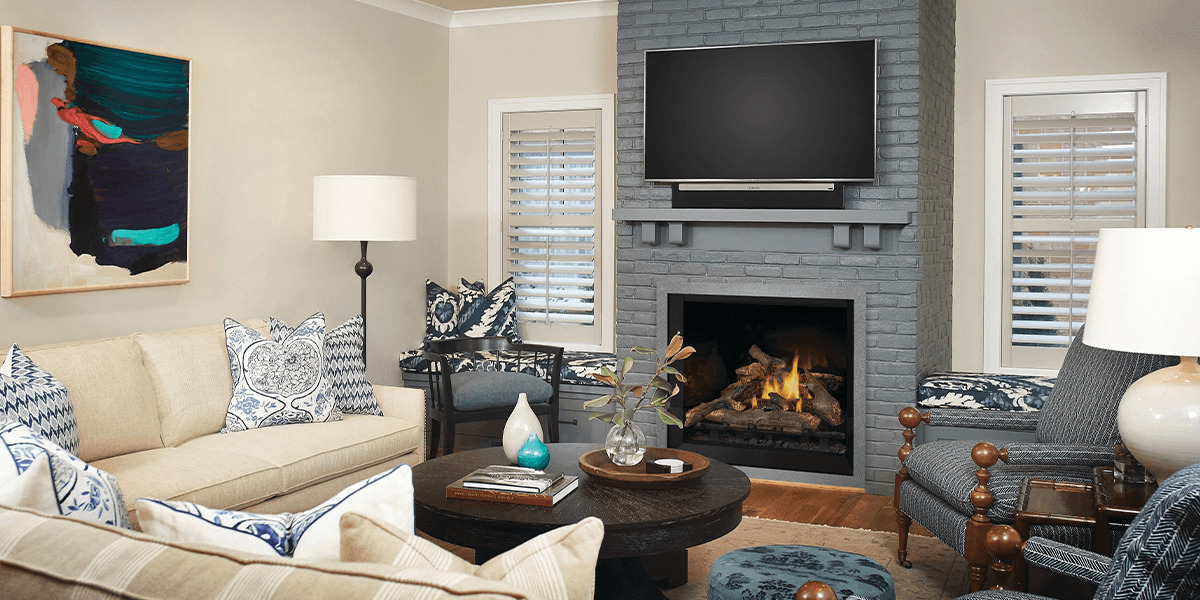
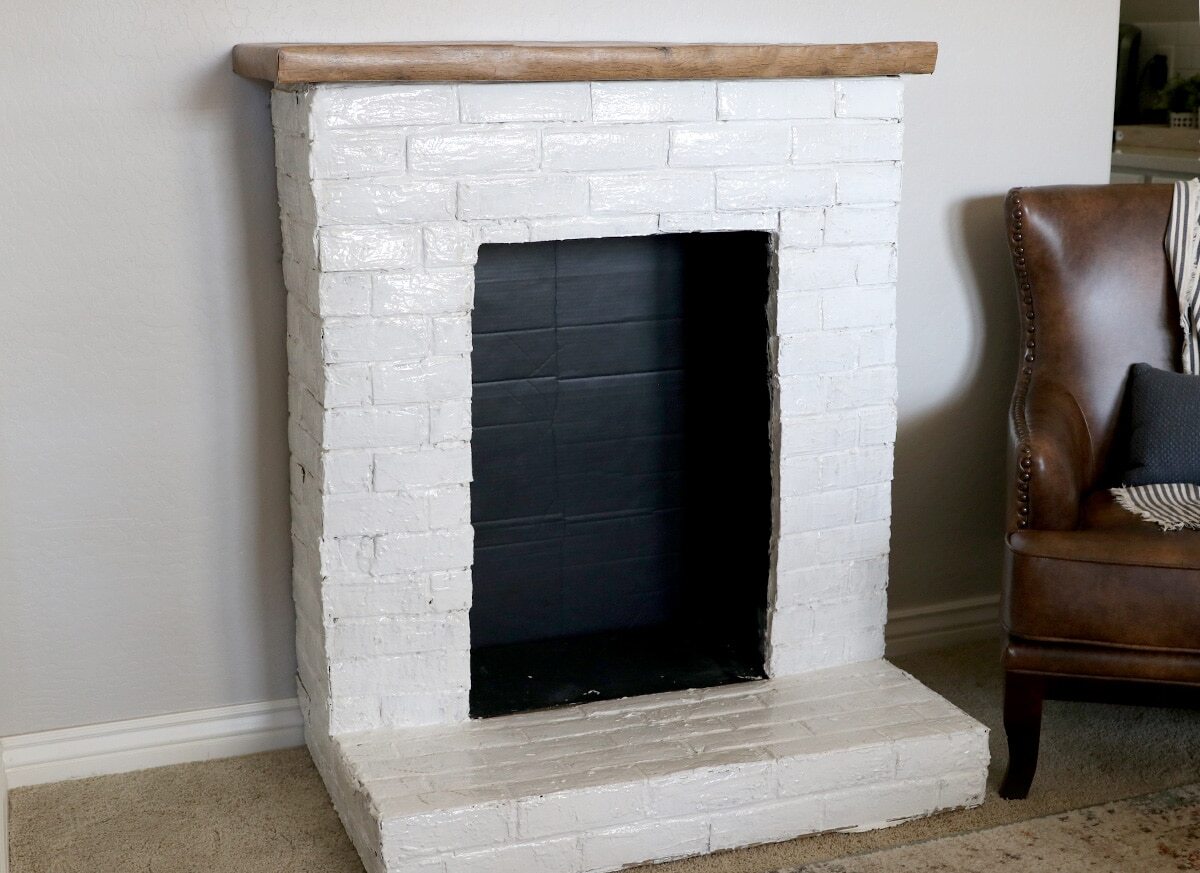
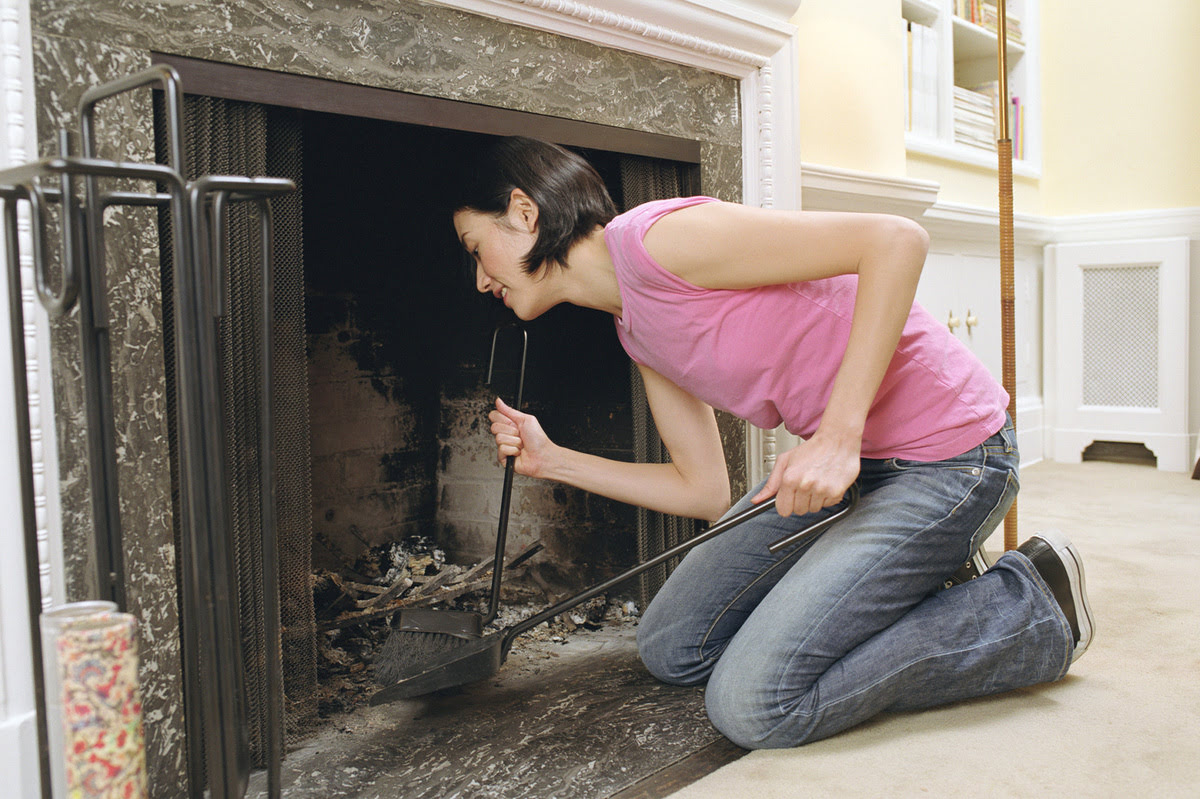
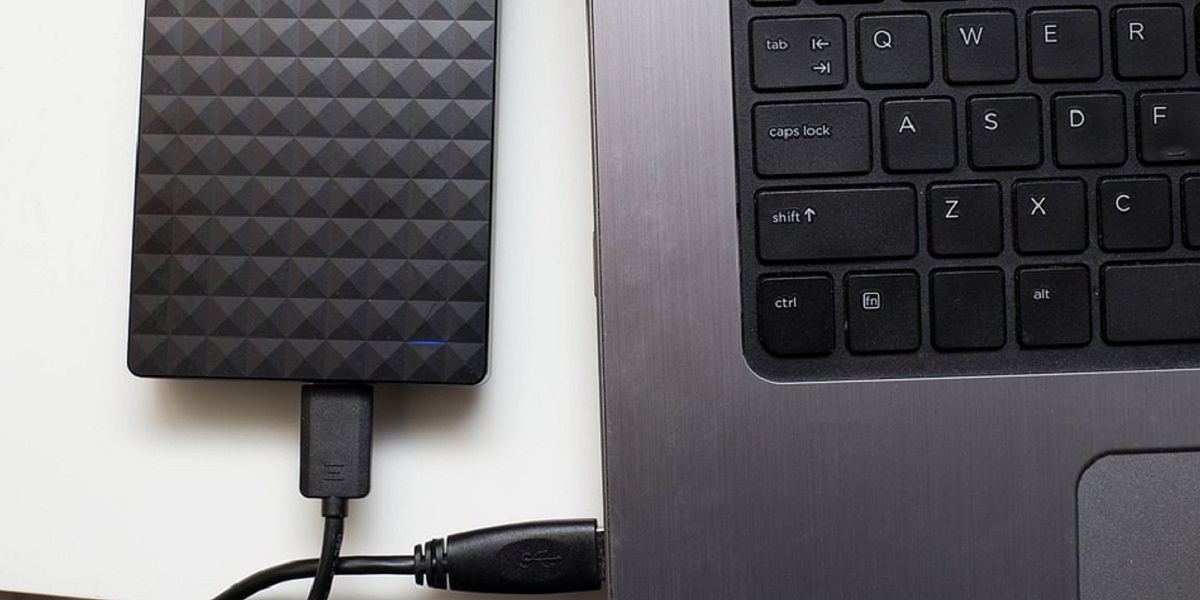

0 thoughts on “How To Get More Heat Out Of The Fireplace”